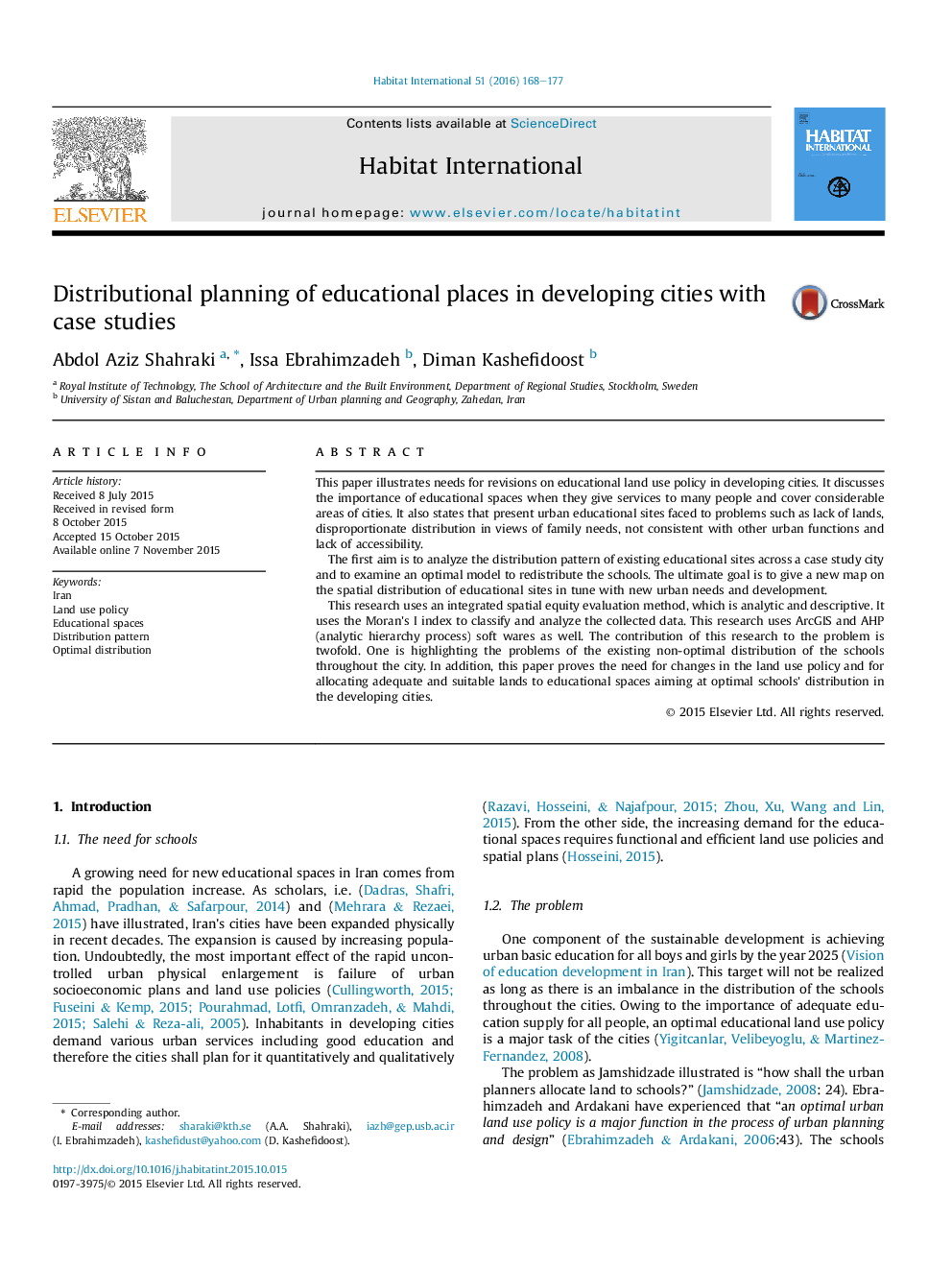| Article ID | Journal | Published Year | Pages | File Type |
|---|---|---|---|---|
| 1047670 | Habitat International | 2016 | 10 Pages |
•This paper illustrates the need for new pattern of educational land use policy.•It shows the existing problems with the help of certain indicators.•It provides a new distribution plan to stop the self-development hazards.•It presents a new distribution pattern based on public opinion.
This paper illustrates needs for revisions on educational land use policy in developing cities. It discusses the importance of educational spaces when they give services to many people and cover considerable areas of cities. It also states that present urban educational sites faced to problems such as lack of lands, disproportionate distribution in views of family needs, not consistent with other urban functions and lack of accessibility.The first aim is to analyze the distribution pattern of existing educational sites across a case study city and to examine an optimal model to redistribute the schools. The ultimate goal is to give a new map on the spatial distribution of educational sites in tune with new urban needs and development.This research uses an integrated spatial equity evaluation method, which is analytic and descriptive. It uses the Moran's I index to classify and analyze the collected data. This research uses ArcGIS and AHP (analytic hierarchy process) soft wares as well. The contribution of this research to the problem is twofold. One is highlighting the problems of the existing non-optimal distribution of the schools throughout the city. In addition, this paper proves the need for changes in the land use policy and for allocating adequate and suitable lands to educational spaces aiming at optimal schools' distribution in the developing cities.
